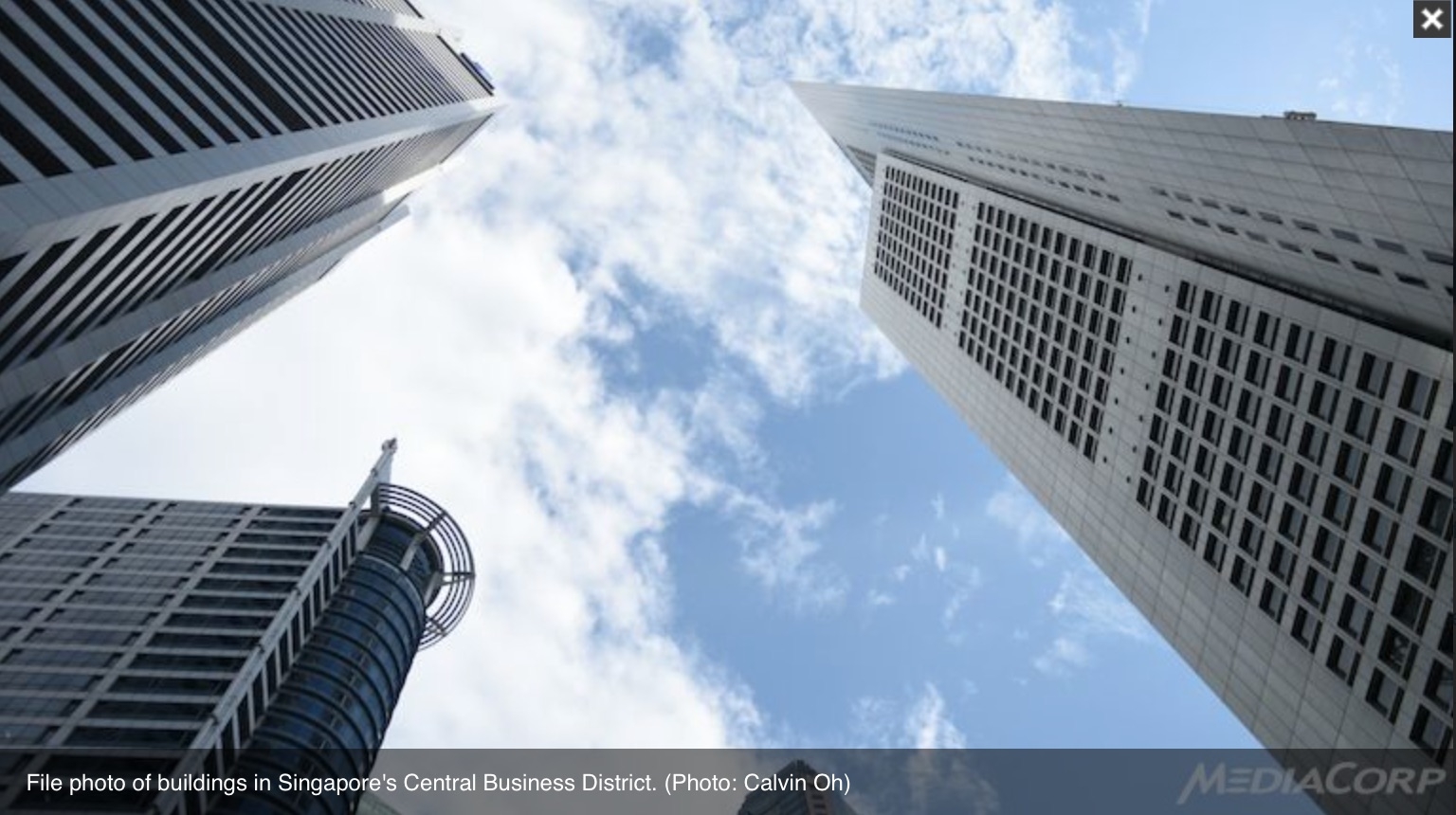Empty offices and falling rents spell further gloom for landlords

Office buildings in the city fringes may be increasingly left vacant as tenants seek the opportunity to move into Grade A premises in the Central Business District (CBD) with rents weakening amid an onslaught of incoming supply.
Pundits, such as Bloomberg columnist Andy Mukherjee, have blamed the weak office market here on a “fundamental miscalculation” on the part of some Singapore developers that had “misplaced optimism” that China would sustain its rapid pace of its growth and pull the rest of Asia along.
With another 7 million square feet of new office space under construction at a time when businesses are holding back expansion plans, rents in Singapore will continue to tumble, analysts warned. Mr Nicholas Mak, executive director at SLP International Property Consultants, has forecast a 10 to 15 per cent fall in rents this year, accelerating from the 6.5 per cent decline last year.
“In the past six months, we have already seen a noticeable slowdown in demand (for offices). The financial services industry has been the main demand driver but that has been the biggest weakness in the last few years,” said Mr Desmond Sim, head of CBRE Research in Singapore and Southeast Asia.
As of the end of last year, Grade A office rents in the CBD cost between S$8.00 and S$12.80 psf, according to a report by property firm Knight Frank Singapore. Those outside the CBD but still within Singapore’s central areas fetched S$7.50 to S$11.90 psf, while rents for offices in the city fringes and suburbs ranged from S$4.40-S$8.10 psf.
Competition for tenants is intensifying, with landlords offering attractive renewal terms to retain existing tenants, said Ms Louise Toovey, director of office agency at Knight Frank.
They are also more willing to extend competitive rental rates to new tenants and offer additional incentives such as a rent-free period within the lease, she added.
The landlords’ willingness to lower rents have already resulted in several flight-to-quality cases. Online travel company Expedia vacated its Hong Kong Street premises for space in the recently-completed South Beach Tower. Immigration services provider Fragomen also moved into South Beach Tower from Haw Par Glass Tower, real estate consultancies Colliers International and Knight Frank reported. But with fewer companies expanding and fewer new companies being set up, this phenomenon comes at the expense of older, less attractive buildings.
“Flight-to-quality will definitely leave voids in other markets. The non-beneficiaries are buildings that are functionally-challenged – smaller floor plates, pencil-thin buildings or very, very aged buildings. This might encourage some sort of regeneration to keep these buildings up-to-scratch. Regeneration could even come in a change of use,” Mr Sim said.
This also means that islandwide office vacancy rates will likely soar past the current 9.5 per cent, as almost 4 million sq ft of the estimated 7 million sq ft of supply is due for completion in the second half of this year.
Signs of rising vacancy are clear, analysts said, citing Tanjong Pagar Centre as an example of slower demand for offices. At 290 metres, the prestigious mixed-use development will be Singapore’s tallest building when completed later this year, but it has secured barely 10 per cent of lease commitments for its 890,000 sq ft of office space. Other major developments set to enter the market include Marina One and DUO Tower, which will add more than 2 million sq ft of office space.
In response to TODAY’s query on the take-up rates of Marina One and DUO, developer M+S would only say that it is seeing “healthy interest” and “various tenants have pre-committed” to both projects.
Property analysts said that the days of quick supply absorption are well over and the current weak market could take as long as five years to recover even as land supply for commercial development has been scaled back.
“It is bad enough. Supply is at record high this year at a time when companies are downsizing and merging,” said Mr Ku Swee Yong, chief executive of property firm Century 21.
“Good or bad market, there should have been a controlled but steady supply of land. Controlled, meaning the developers shouldn’t have been so excessive. The Government may have been excessive in releasing land through GLS (Government Land Sales programme), but its premise is that with more land, there can be better control of prices,” he added.
CIMB Private Banking economist Song Seng Wun said that regardless of macroeconomic conditions, the Government has taken a deliberate approach to have supply exceed potential take-up.
“Today’s demand may be softer than earlier projected, but this is part and parcel of any cyclical market. It’s always difficult to predict,” he said.




